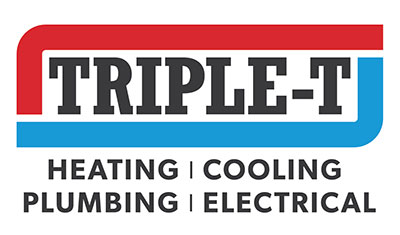Clogged Bathroom Sink? Here’s What to Do
Every homeowner has experienced a clogged bathroom sink at some point. One day it’s draining just fine, and the next, it’s behaving more like a stagnant pond than a functional fixture. If you’re wondering how to fix a slow-draining sink, you’ve come to the right place. In this comprehensive guide, you’ll learn what causes clogged bathroom drains and some practical tips to get the water flowing again.
Why is My Bathroom Sink Clogged?
Before you tackle the problem, you should understand why your sink is clogged in the first place so you can keep it from happening again. Some of the most common culprits include:
- Hair: Few things wreak more havoc on your drains than hair. These strands from shaving and washing clump together to form blockages in the drain.
- Soap scum: Soap isn’t as innocent as it appears. It combines with minerals in the water to form a hard deposit known as soap scum, leaving a residue that can cause drainage issues over time.
- Foreign objects: If hair ties, toothpaste caps, medication, earrings, or other foreign objects accidentally fall into the sink, they can get stuck in the drainpipe and disrupt the water flow.
- Damaged pipes: Drain systems are susceptible to wear and tear. Over time, they can rust, erode, or suffer damage from invasive tree roots, all of which can disrupt the water flow.
- Mineral build-up: Hard water, known for its high mineral content, can cause pipe blockages as minerals accumulate and solidify.
- Grease and oil: These substances are notorious for causing drain clogs. When rinsed down the sink, they cool, harden, and stick to the pipe’s interior, restricting the water flow.
How to Unclog a Bathroom Sink
Now that you know what could be clogging your sink, it’s time to roll up your sleeves and put your DIY skills to work. Remember, chemical drain cleaners are never a good choice. They may seem like an easy fix, but their corrosive nature can damage your pipes and harm the environment. Instead, explore seven natural ways to unclog drains before calling a plumber.
1. Pour Near-Boiling Water
This straightforward method may be all you need to get things flowing again. Follow these simple steps:
- Heat a kettle of water to near boiling.
- Carefully pour the hot water down the drain.
- The heat should dissolve minor blockages caused by soap scum or grease.
2. Use Baking Soda and Vinegar
You might remember the explosive reaction between baking soda and vinegar from elementary school science projects. Here’s how to use that reaction to your advantage:
- Pour 1/2 cup of baking soda down the drain.
- Follow up with 1/2 cup of white vinegar.
- The resulting fizzing action should break down minor blockages.
- Let the mixture sit in the drain for 15 to 20 minutes. Then, rinse with near-boiling water.
3. Clean the Stopper
The stopper that allows you to plug the bathroom drain could be the culprit. Follow these steps:
- Remove the stopper by disconnecting it from below the sink.
- Wearing rubber gloves, clean off the hair, soap scum, and other debris into a trash can.
- Rinse thoroughly and replace the stopper.
4. Clean the P-Trap
For more stubborn blockages, you might have to get your hands dirty by cleaning the p-trap. Here’s how:
- Place a bucket beneath the curved section of pipe directly below the sink, known as the p-trap.
- Loosen the nuts on the p-trap by hand or with a wrench and remove it, catching any water and debris in the bucket.
- Clean out the inside of the p-trap into a trash can, removing any blockages you find.
- Reattach the p-trap and check if the sink drains properly now.
5. Use a Cup Plunger
If the sink still drains slowly, the next step is to use a plunger. Choose a cup plunger to ensure a tight seal, and for hygienic reasons, avoid using the same one you use when unclogging toilets. Here’s how to fix a clogged sink with this method:
- Fill the sink with an inch of water to cover the drain and the bottom of the plunger.
- Place the cup of the plunger over the drain and give it a few good, firm pumps.
- The pressure created should dislodge the clog and clear the drain.
6. Insert a Straightened Coat Hanger
If the clog persists, it’s time to get creative. Here’s how to unclog a sink with a straightened coat hanger:
- Unravel a wire coat hanger and straighten it out as much as possible. To protect your pipes, create a small hook on the end, cover it with a scrap of fabric, and apply duct tape.
- Insert the coat hanger into the drain to push the clog out of the way.
7. Rent a Drain Snake
Your last option before calling a plumber is to use a drain snake, a specialized tool designed to break up stubborn clogs. Here’s how to use one:
- Rent a drain snake from your local hardware store. Ensure you pick a size appropriate for your drain.
- Push the cable into the drain, using a gentle rotating motion to help it navigate the bends in the pipe. Keep pushing until you encounter resistance.
- Rotate the snake to break up or ensnare the blockage so you can pull it out.
- Slowly retract the snake, cleaning off the cable as you go.
- Test the drain to see if it flows smoothly now.
Contact a Plumber
If you’ve tried all the methods outlined above and your sink is still clogged, it’s time to call in the experts. With 50 years of experience serving Utah County, Triple T Heating, Cooling & Plumbing understands our community’s unique plumbing needs. Our certified plumbers are equipped to handle everything from minor clogs to major replacements. Call us at 801-798-7711 or contact us online to request drain cleaning or other plumbing services today.


